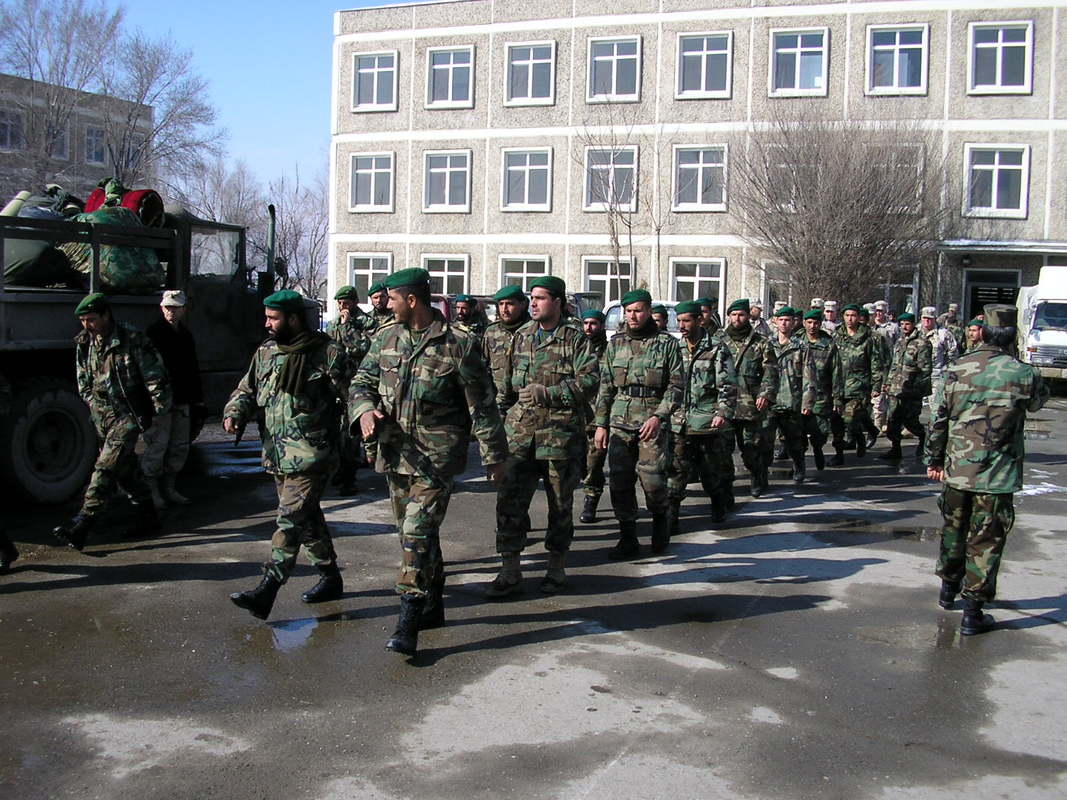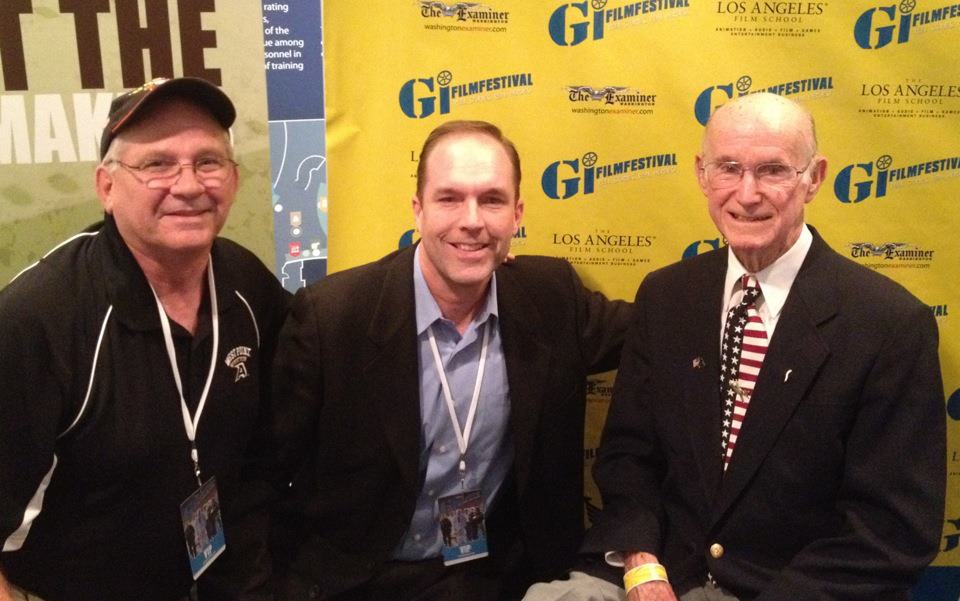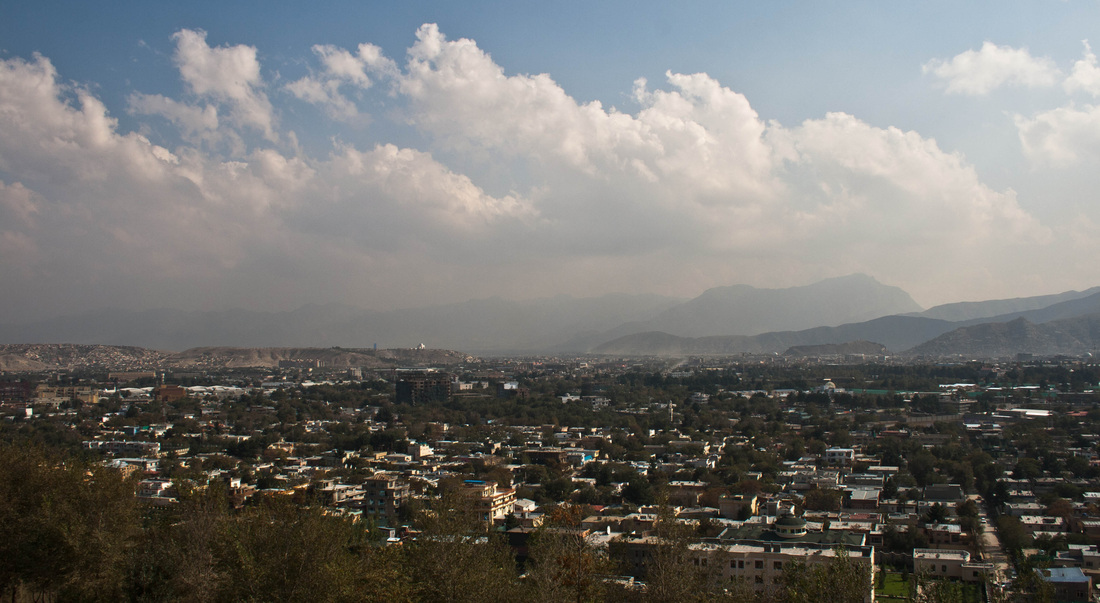|
Jim Wilhite :: With the publication of my book in 2010, the release of the documentary in 2015 and numerous speaking engagements, I have had the privilege and opportunity to share the story of the building of the National Military Academy of Afghanistan. Modeled on the United States Military Academy at West Point, NMAA has steadily grown to become the "Crown Jewel of Afghanistan." The last few years, the most frequently asked questions I get are: "So how is NMAA doing? Is it still functioning?" Recently, I corresponded by email with a young man who I had helped become the first student from Afghanistan to graduate from West Point. He provided me with a current picture of NMAA at the start of 2017. In 2005, there were 352 applicants and 115 were admitted as cadets. Today the academy is assessing more than 4,000 applicants for 600 slots annually. Right now there are 1,892 cadets enrolled at NMAA. The academy currently offers the following seven majors: Civil Engineering, General Engineering, Language and Culture, Military and Strategic History, Management and Leadership, Political Science and Computer Science. Upon graduation cadets are assigned through a combination of request and lottery to one of seven branches: Infantry, Artillery, Armor, Engineering, Logistics, Signals, Finance. The admission of women to NMAA in 2009 signaled a significant achievement for the leadership of Afghanistan. There are currently 27 female cadets enrolled at the academy with 10 applications last November and 12 that graduated in 2016. These officers were assigned to Engineering, Finance, Logistics and Signals. The National Military Academy of Afghanistan is alive and well and growing as one of the largest officer producing institutions in the country. The majority of platoon leaders and company commanders are graduates of NMAA. In 2015 after the Kunduz Province had fallen into the hands of the Taliban, a NMAA company commander played an important role in recapturing the province and replaced the flag of Afghanistan over the governor's office. There are still tensions though. Because the expectations are very high, the leadership quality of NMAA graduates is under close scrutiny. And while graduates share common experiences and bonds of friendship, the ethnic friction within the culture is very strong which has its effects on every individual including some forms of discrimination and negative propaganda. But my young friend summarized the sentiments of many of the Afghans I was proud to call friends and peers: "My father also sends his regards to you and thanks you for your hard work to establish and assist NMAA and the Afghan people." Though there are very real challenges for the leadership in Afghanistan, the founding of NMAA is a good news story that continues to grow in stature for a positive future for the country. Trainers marching outside NMAA, 2005.
0 Comments
Scott Holmgren :: Throughout the winter and spring, Jim and I worked with Co-Producer Adam Braun, Director of Photography Patrick Gines and Editor Bryan Zhang on multiple cuts of the film. First an Assembly Cut laid out the broad order of the story that corresponded to the script. From there, some tweaks and shuffling led to a Rough Cut that approximated what the final film would look like. In the Rough Cut stage we identified specific stills and video that would support the story as told by Jim and the other interviewees. We also sampled several music tracks, searching for melodies and tempos that would reinforce those sections of the story we wanted to emphasize and would also serve as transitions from one sequence to the next. From there we crafted a Final Cut that added all the layers - photos, video, music, sound effects, graphics, titles, etc. - together for a final review. Last minute adjustments were made and then the project was sent off for color finishing and sound mixing to produce the Release Cut. This was the completed version of the film that, along with a promotional trailer, was sent off for DVD duplication. Our target date was Saturday, November 7th, when we would premiere the documentary at the Branson Veterans Week Film Festival in Branson, Missouri. More than 400 people, including veterans and their families, attended screenings of We Answered the Call over two days at the IMAX Entertainment Complex. Other films shown were Producer Rick Beyer's documentary The Ghost Army and the Vietnam film Honor In the Valley of the Tears. In addition, Jim had invited several members of the mission for a 10-year reunion since the academy had opened in 2005. For me, it was an honor meeting several veterans in person who I knew only by name from the book. We're eagerly looking forward to 2016 and new opportunities to tell the story of We Answered the Call. Scott Holmgren :: At the beginning of October, Jim and I headed up to the Hudson Valley for a glimpse of fall colors, Army football and several interviewees who sat patiently under the lights. It is remarkable how many of the key leaders who were part of the mission of We Answered the Call ten years ago were there at West Point at the start of the month. Ed Naessens, Barry Shoop, Gene Ressler, Steve Ressler, and Dave Wallace all very patiently sat with wires running under their shirts, answering numerous questions. And as each spoke, the story came alive even more, from varied perspectives and backgrounds. The Public Affairs Office of West Point and Theresa Brinkerhoff were incredibly helpful and allowed us to shoot in the studio in the basement of Thayer Hall. It was cool, soundproof and a perfect setting to capture footage. Outside the studio, we were able to shoot many of the sights of the Academy: views of the Hudson from Trophy Point, the Plain and surrounding buildings, architectural and natural details, and a sense of the history of the campus. While the shoot was incredible, the weather for the football game was not. But Army won 33-24 over Ball State, which made up for the rainy and dreary conditions. With nearly all our interview footage now in the can, the next step will be to piece together the narrative spine that will drive the documentary. Jim Wilhite :: In May Emily and I traveled to Tallahassee, Florida and met with Adam Braun of Frame Productions, LLC. After a short visit I sat in a chair under some hot lights and began the filming of We Answered the Call. I spent about five hours sharing my experience with the camera and crew and departed with a whole new appreciation for what people go through that live under these circumstances. While I was only sitting, I was exhausted when finished. We then traveled to Orlando where I spent a week with Screenwriter Scott Holmgren and his wife Annamarie. I had a couple of speaking engagements while there and we started developing a plan of action for the future of the documentary project. The following Friday, Emily and I departed Orlando and returned to Tallahassee for additional filming. While I think we got most of my part completed, I know there will be additional work to be done to finalize this story that needs to be told. In October, we will be meeting at West Point to do interviews with select faculty that assisted in the implementation of the academy. I am currently working with West Point to finalize the approval for support of our being on campus with a film crew. Hopefully that will be completed sooner than later. Jim – under the lights in Tallahassee – being interviewed.
Scott Holmgren ::
No, not Gene Wilder and Zero Mostel. Not even Nathan Lane and Matthew Broderick. Jim and I had to ask ourselves, "Did we want to become producers of a documentary?" Fortunately we had met the production team at Frame: Adam Braun, Patrick Gines and Bryan Zhang. Based in Tallahassee, FL and boasting projects produced for companies and organizations both large and small, Frame could handle the know-how necessary to steer us in the right direction and might be able to help us get this snowball rolling down the hill. I had given Adam a copy of Jim's book, and after reading it, Adam was intrigued with the possibility of telling the story. Several dozen emails, text messages and phone calls later, we had sketched out a tentative plan to see how we might be able to raise the funds necessary to make a documentary. We would need to create some teaser videos and a promo video. We wanted to demonstrate that this was a serious project and that we were willing to roll up our sleeves and activate it. After more discussion, we decided a road trip to Florida was in order. Leo Bloom: Max, I think we're getting in too deep. Max Bialystock: Too deep? This is nothing. I'll tell you when we're getting in too deep. ~ The Producers Scott Holmgren :: It's an amalgam of professionalism and personal vulnerability when you ask for someone's opinion of your work. And still after 25 years of creative, design and producing, there's the wonder of "what will they think?" I had sent the first draft of the screenplay for We Answered the Call a few weeks earlier. When the email came back from the script reader, I did pause for a second before opening the attachment. Call it a moment of creative trepidation. It was anything but. The coverage sent back by the script reader was a breath of fresh air. After spending more than a year on the first draft of the adaptation of Jim's book, I was too close to it. The reader confirmed several things. The script needed to be willing to distance itself from the source material. Fewer characters, the absence of a clear antagonist, and a more demonstrative change in the protagonist. Also, the conflict orchestration and character development needed refining and greater stakes. Overall, pivotal scenes needed more conflict. It was exactly what we needed. In addition, there were plenty of positives and an encouragement to continue development. Time to start thinking about the next draft. At that time Jim, his wife Emily, and I attended the G.I. Film Festival in Washington D.C. They call it "Sundance for the troops..." Started by a husband/wife team, the festival "is the first in the nation to exclusively celebrate the successes and sacrifices of the service member through the medium of film." It seemed like the ideal venue to test whether our story might have a broader appeal and what stories were currently being told. It was several days of premiers, meeting filmmakers and supporters of the military, and introspection about our project. At the end of GIFF, we had confirmation that there was an opportunity for us to tell Jim's story through film. But perhaps a feature length piece was not the place to start. Jim and I discussed how a documentary might be the better first step. Though a significant undertaking, a documentary could be produced on a much smaller scale, with a more manageable budget, and a clearer goal in mind. As well, if we had a screenplay and an already-produced documentary under our belt, might that carry more weight when sharing the vision for a narrative movie? Our conversations took a turn in that direction... Who did we already know who might be able to help us?... What would a documentary look and sound like?... What production logistics would there be?... And - most importantly - what would it cost?... It was at that point that I met Adam Braun, Patrick Gines and Bryan Zhang, the names behind Frame. At the G.I. Film Festival in Washington D.C. After the screening of the award winning documentary "The Lost Airmen of Buchenwald," Jim and Scott met and thanked World War Two veteran Don Shearer who survived the unbelievable ordeal.
Scott Holmgren ::
I was convinced the story of We Answered the Call needed to be told. Colonel James Wilhite’s story of building an academy of higher learning and military training based on the West Point model – in Afghanistan! – had captured my imagination. Not only did it play out in a war zone where media-filtered accounts and sometimes misportrayals of what was going on spun a one-dimensional rendering, but it was also a fiercely personal journey of a man pursuing his life’s purpose against the forces that opposed him. It was a story both unlikely and unnerving but original and inspirational. Harrowing yet heroic. But could it be told as a movie? What potential was there for producing a feature-length screenplay? In discussing the project with Jim, we both agreed that the building blocks for a narrative film were there. The main protagonist had a clear and strong objective with numerous, escalating roadblocks in his way. There were also several subplots that could be included to support and accentuate Jim’s main story. Jim’s character also underwent change as he had to overcome obstacles that were both situational and interpersonal. Lastly, there was a clear resolution to the main story arc. However, there would also be several challenges in adapting the story. First, there are lots and lots of characters. Lots. Besides Jim and his wife Emily, the supporting personnel comprising Jim’s team who rotated in and out of the mission were numerous. Several people were permanent fixtures at OMC-A. Throw in all the Afghan officers, governmental leaders, translators and one very disconnected NATO officer, and we had a cast of named characters numbering over seventy-five. Like I said, lots. How many would be too many for an audience to follow? Second, there was no clear antagonist. George Bailey has Mr. Potter. Maximus has Commodus. Luke Skywalker has Darth Vader. But Jim had no direct opponent. Now certainly many great films have the hero of the story working against forces and situations without one face. In Saving Private Ryan, Captain John Miller must overcome the German army to find and evacuate Private Ryan. In Black Hawk Down, the American forces are battling the army of the Mogadishu warlord. But these stories rely heavily on dramatic action to propel the situation forward. How would Jim's story flow without a main antagonist? Third, stretches of the book contained lengthy information or exposition. These passages would need to be either set aside or woven into the story progression. How would we handle them? Finally, there were several problems that were solved "off screen" in the book. In real life, the building of the academy was very much a team effort. Many of the named characters did things and made decisions that kept the opening of the academy moving forward. But often there were just mentions of these solutions without descriptions or Jim's direct involvement. Could we integrate these situations? Knowing these challenges we set about to adapt the book into a screenplay. With Jim advising, I finished a first draft, 120 pages, as faithful and close to his book's narrative as it could be. And then we needed some objectivity. We were both so close to the story, it was difficult to know what was working and what wasn't. As far as I knew, I had just completed either the next Casablanca or the next Battlefield Earth. A producer I know suggested a script reader, and off we sent the script to L.A. to be read and returned with some professional analysis. Scott Holmgren :: I met Colonel James Wilhite a few years back. He was the guest speaker at our local West Point Parents Club's annual "Hail & Farewell" Luncheon. My son had graduated high school and was gearing up for R-Day and Cadet Basic Training - Beast Barracks - as an incoming Cadet Candidate at the Unites States Military Academy at West Point. "Hail & Farewell" is when the parents club celebrates the newly commissioned Second Lieutenants that have just graduated from the Academy who live in the area and congratulates the local high school graduates who will shortly embark on their journey to West Point. Jim had been invited to share his experiences in Afghanistan. Like most Americans, my perspective on our military's involvement was limited to news sound bites and internet headlines with an occasional article tossed in from time to time. National support would waffle, but ultimately it was sliding towards an unpopular war. And now my son was heading into the proving ground for our country's future military leaders. As a parent, I could not help begin to wonder, "what has he gotten himself into?" But then Jim began to speak. What I heard was not a gloom and doom lament over misguided strategies, not a condemnation of an administration's actions, not a verdict on the wisdom or lack thereof to get involved in a land war in Asia. No. It was a story I had never heard. And one I almost didn't believe was true if it were not for the tenacious gentleman from Oklahoma who bared his spirit and narrated an amazing account of overcoming impossible odds and vehement opposition to a mission that ultimately fell on his shoulders. He had been tasked to build a national military academy for Afghanistan that was modeled on West Point. And he had no budget and no full-time staff. Not even a wizard's staff would have been much help. As I listened to his account - how he was ordered to active duty in his late fifties while teaching at a local university, how his wife stared straight through him in disbelief when he told her the news, how he arrived in the shadows of the Hindu Kush with no specific orders and dependent on translators for vital communications - I kept asking myself, "Why have I not heard about this?" It was an amazing story of ingenuity, perseverance, humility, compassion, determination, and selflessness that buoyed my perspective on not only Afghanistan but also our military's role in projecting freedom and democracy to the world. Afterwards, I bought a copy of his book and thanked him for sharing his story. As I shook his hand, there was a pull on my spirit as well... How could more people hear this story? Kabul, Afghanistan in 2011.
|
AuthorsColonel James Wilhite Archives
December 2017
Categories
All
|





 RSS Feed
RSS Feed